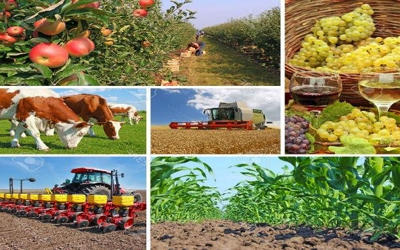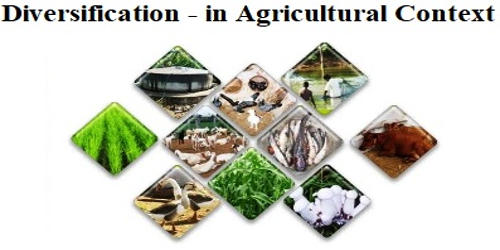Diversification occurs when a business develops a new product or expands into a new market. In the agricultural context, diversification can be regarded as the re-allocation of some of a farm’s productive resources, such as land, capital, farm equipment, and labor to other products and, particularly in richer countries, to non-farming activities such as restaurants and shops. The development of a dynamic farming system requires a policy environment that is conducive. Within the agriculture sector, diversification is a shift from the traditional cropping pattern of less remunerative crops to high value-added diversified agriculture. Moreover, the establishment of farm-rural-urban linkages requires effective demand. Factors leading to decisions to diversify are many but include: reducing risk, responding to changing consumer demands or changing government policy, responding to external shocks, and, more recently, as a consequence of climate change.
The concept of diversification conveys different meanings to different people at different levels. For example, with respect to the national economy, it generally conveys a movement of resources, especially labor, usually out of agriculture to industry and services, a sort of structural transformation in agriculture practices such as in cropping pattern, livestock rearing, or in agricultural enterprises. The process of agriculture diversification is triggered by the availability of improved rural infrastructure, rapid technological advancements in agricultural production, and changing food demand patterns.

Fig: Agricultural diversification
Definitions of diversification
Agricultural diversification can involve the movement of resources from low-value commodities to high-value ones. It focuses mainly on horticultural, dairy, poultry, and fisheries sectors. Diversification into productive activities in this context simply means to divulge the unnecessarily employed workforce towards activities that are short on the workforce. While most definitions of diversification in developing countries do work on the assumption that diversification primarily involves a substitution of one crop or other agricultural product for another, or an increase in the number of enterprises, or activities, carried out by a particular farm, the definition used in developed countries sometimes relates more to the development of activities on the farm that do not involve agricultural production. In other words, diversification involves the changes in the product portfolio from the low-value to high-value commodities like vegetables, milk, meat, eggs, and fish based on the market demand that creates the new horizon for the rural income source
Diversification of agriculture being a strategy would open up opportunities, to a large extent, for value addition in agriculture and will also lead to better crop planning and improve the earning opportunities in the farm community. In developing countries such as India, which has been one of the leaders in promoting diversification, the concept is applied both to individual farmers and to different regions, with government programs being aimed at promoting widespread diversification.
















